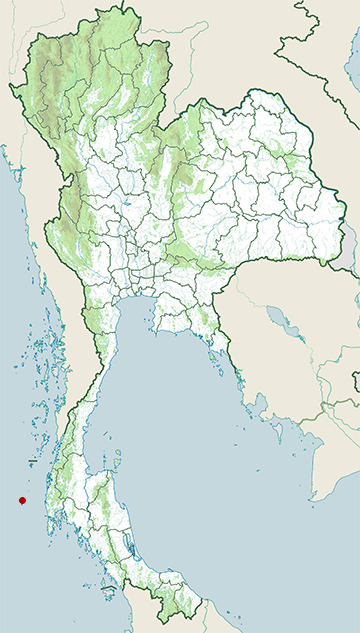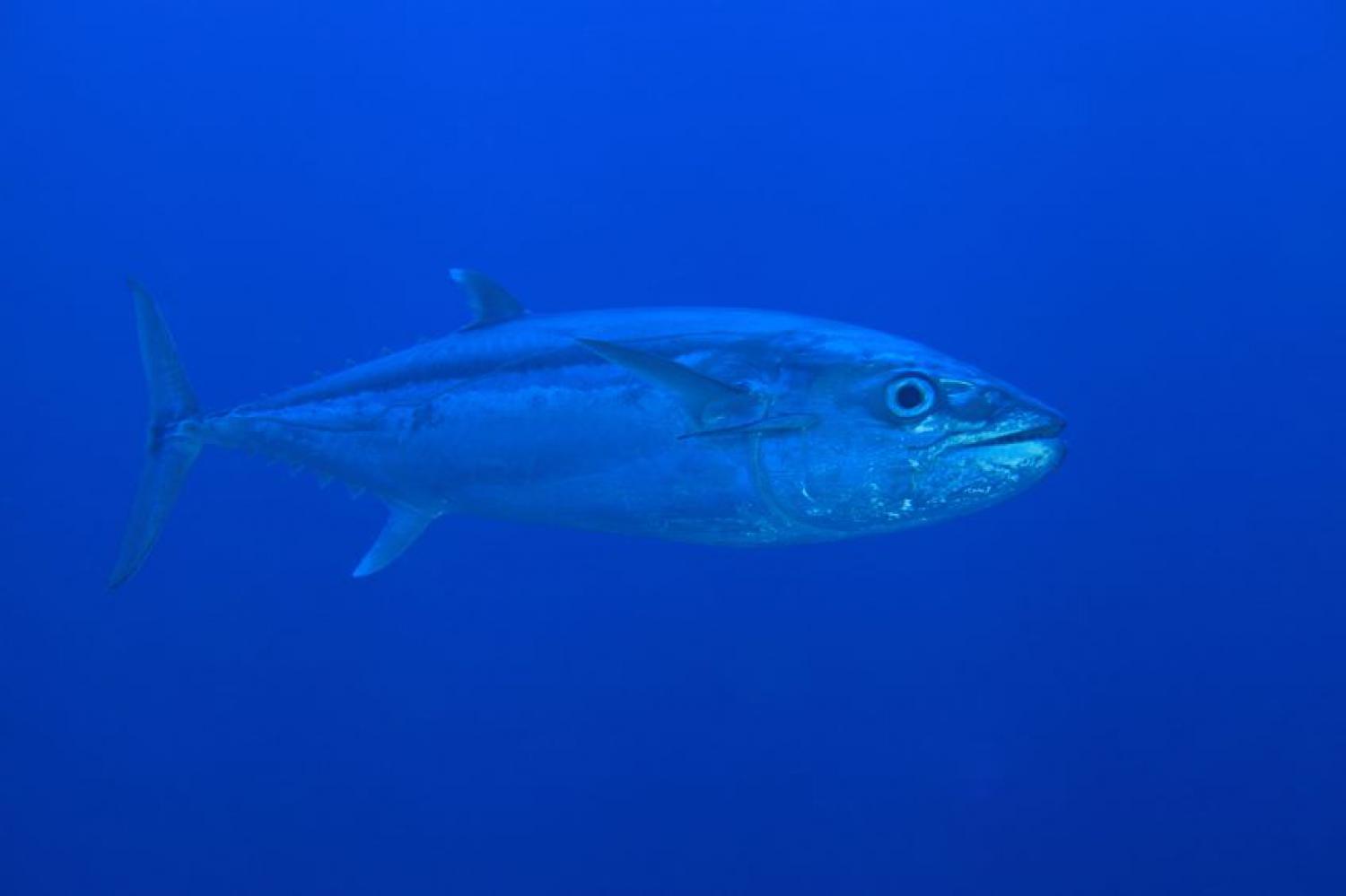Species of Thailand
Dogtooth tuna
Gymnosarda unicolor
Eduard Rüppell, 1836
Gymnosarda unicolor, commonly known as the Dogtooth tuna or White tuna, is a species of pelagic marine fish which belongs to the family Scombridae.
Description
The distinctive points to recognize the Dogtooth tuna are its large size, can grow up 2.50 m and 130 kg, its streamline shape, always swimming with open jaws and its body coloration :blue green on the back, silver on the side and whitish on the belly and two white tips on the two back fins close to its caudal peduncle. The average size commonly observed is around 40 to 120 cms.
Distribution
The Dogtooth tuna is widespread throughout the tropical waters of the Indo-Pacific area from the eastern coast of Africa, Red Sea included, to oceanic islands of the Pacific Ocean, Hawaii excluded.
Ecology
Dogtooth tuna frequent reef environments, with smaller fish being more commonly found near shallow reef areas and larger ones haunting deep reef drop off areas, seamounts and steep underwater walls. The dogtooth tuna is one of the apex non-pelagic predators in its environment, sharing that position with Giant Trevally, Napoleon Wrasse, and large groupers, as well as reef, bull and tiger sharks. An aggressive predator, the dogtooth tuna is an opportunistic feeder that is capable of taking a wide variety of prey items. In most areas, the mainstay of its diet probably consists of pelagic schooling fish found near reef habitat, including fusiliers, carangids such as rainbow runners and mackerel scad, and scombrids.
Fishing
The dogtooth tuna is appreciated in most of its range as a fine food fish and also as a game fish sought by both rod and reel anglers and spearfishermen. Dogtooth tuna used to be mostly taken as an incidental catch by anglers trolling for other gamefish - with natural baits for black marlin, for instance, or with lures for wahoo and Spanish (narrowbarred) mackerel. In the last 10 to 15 years there has been more dedicated effort directed at this species because of its rarity and sporting qualities. Dogtooth tuna are now a highly coveted prize by many European and Asian sports anglers. Large specimens are seldom found where there is significant fishing pressure and can be one of the most difficult gamefish to capture. Their habit of making high-speed downward runs when hooked, even on heavy tackle, often sees the line being cut as it contacts deep bottom structure. Sharks frequently mutilate both hooked and speared fish during the later stages of the fight, adding to the difficulty in landing them. The majority of dogtooth tuna captures have tended to be made by trolling with dead and live baits or with lures, particularly deep-swimming plugs. These techniques are still often used, with one niche specialty being the use of live bait such as rainbow runners to tease dogtooth tuna within range of light tackle and fly-casting anglers. High speed jigging with a variety of metal lures has increased tremendously in popularity in the last several years as advancements in tackle technology have resulted in lightweight rods and reels that are capable of handling heavy spectra-type braided lines. Some of the more popular destinations for anglers seeking this species include Okinawa and other islands of southern Japan, Rodrigues and other Indian Ocean islands such as the Maldives, Andaman & Nicobar Islands, Bali and elsewhere in Nusa Tenggara in Indonesia, the Great Barrier Reef and its outlying atolls, and many Western Pacific islands such as Vanuatu, Fiji, Tonga, Samoa and Palau.
This article uses material from Wikipedia released under the Creative Commons Attribution-Share-Alike Licence 3.0. Eventual photos shown in this page may or may not be from Wikipedia, please see the license details for photos in photo by-lines.
Scientific classification
- Kingdom
- Animalia
- Phylum
- Chordata
- Class
- Actinopterygii
- Order
- Perciformes
- Family
- Scombridae
- Genus
- Gymnosarda
- Species
- Gymnosarda unicolor
Common names
- English: Dogtooth tuna
- Spanish: Casarte Ojón
- French:
- Bonite à Gros Yeux
- Thon à Gros Yeux
- Thon blanc
- Thon dents de chien
- Thon gros yeux
Synonyms
- Scomber vau, Curtiss (1938)
- Pelamys nuda, Albert Charles Lewis Günther (1860)
- Gymnosarda nuda, Albert Charles Lewis Günther (1860)
- Thynnus unicolor, Eduard Rüppell (1836)
Conservation status

Least Concern (IUCN3.1)
Photos
Please help us review our species pages if wrong photos are used or any other details in the page is wrong. We can be reached via our contact us page.
Range Map

- Similan Islands
